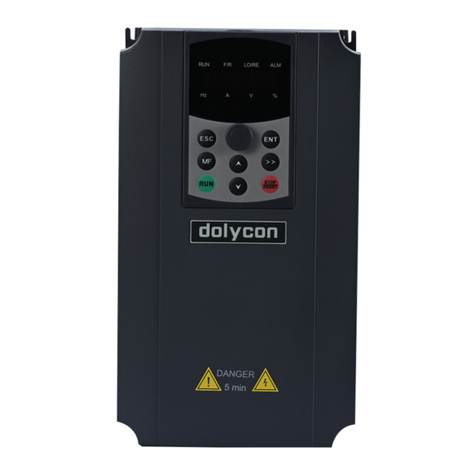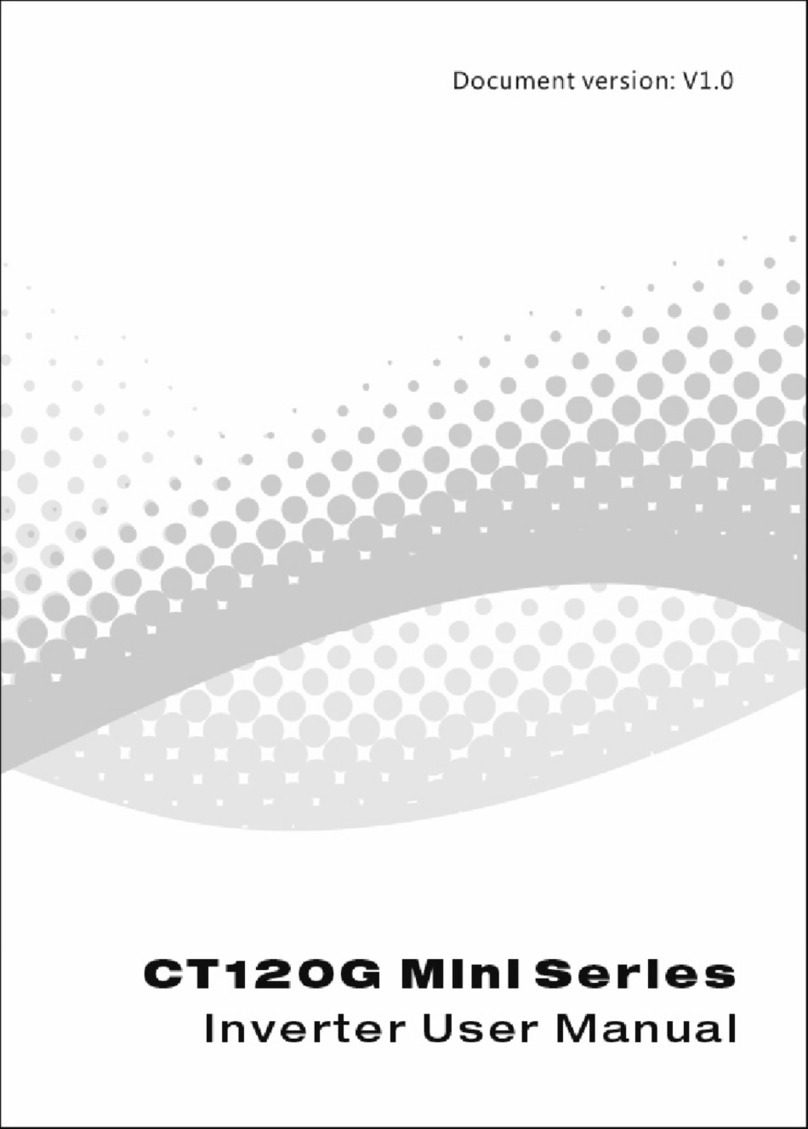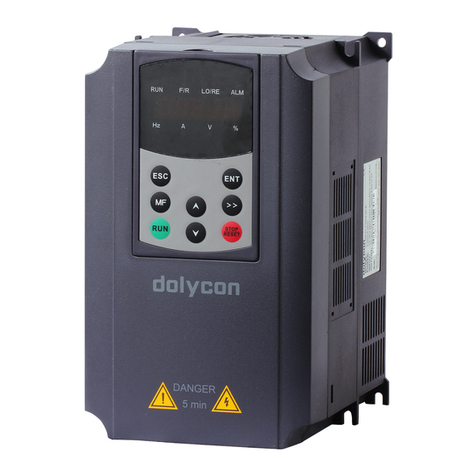
CT100G Series Inverter CHAPTER 1 PRODUCT INFORMATION
- 6 -
CT100G-4T-5.5G-B 5.5 18.5 14 5.5
CT100G-4T-7.5G-B 7.5 22.5 18.5 7.5
CT100G-4T-11G-B 11 30.0 25.0 11
CT100G-4T-15G-B 15 39.0 32.0 15
CT100G-4T-18.5G-B 18.5 45.0 38.0 18.5
CT100G-4T-22G-B 22 54.0 45.0 22
CT100G-4T-30G-B 30 68.0 60.0 30
CT100G-4T-37G 37 84.0 75.0 37
CT100G-4T-45G 45 98.0 92.0 45
CT100G-4T-55G 55 123.0 115.0 55
CT100G-4T-75G 75 157.0 150.0 75
CT100G-4T-90G 90 188.0 180.0 90
CT100G-4T-110G 110 221.0 215.0 110
CT100G-4T-132G 132 267.0 260.0 132
CT100G-4T-160G 160 309.0 305.0 160
CT100G-4T-185G 185 344.0 340.0 185
CT100G-4T-200G 200 384.0 380.0 200
CT100G-4T-220G 220 429.0 425.0 220
CT100G-4T-250G 250 484.0 480.0 250
CT100G-4T-280G 280 539.0 530.0 280
CT100G-4T-315G 315 612.0 600.0 315
CT100G-4T-355G 355 665.0 650.0 355
CT100G-4T-450G 450 805 795.0 450
CT100G-4T-500G 500 890 860.0 500
CT100G-4T-560G 560 1045 1015 560
CT100G-4T-630G 630 1224 1200 630
Note: 1. The inverters with power less than or equal to CT100G-4T-160G are
equipped with braking units, but 37-160kw models are optional with or without
braking units. And braking resistors inside whose power and resistance are as
required as the table 2-2, otherwise has risk of damage. CT100G-4T-185G and
bigger power models can be equipped with external braking units bought by
customers themselves.
2. The above models are the standard general purpose inverters, excluding the
industrial special inverters. You can customize non-standard inverters of other
specifications.
1.2.2 Technical parameters
Table 1-2 Technical parameters






























